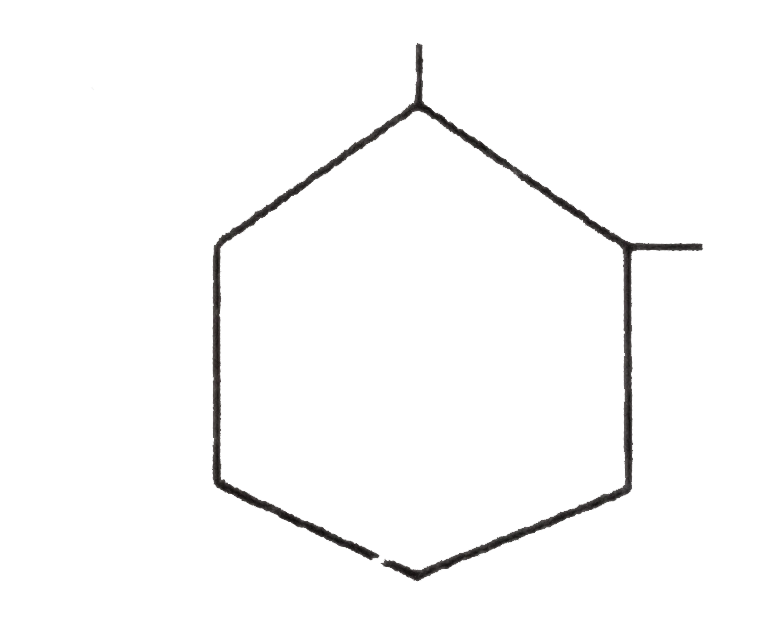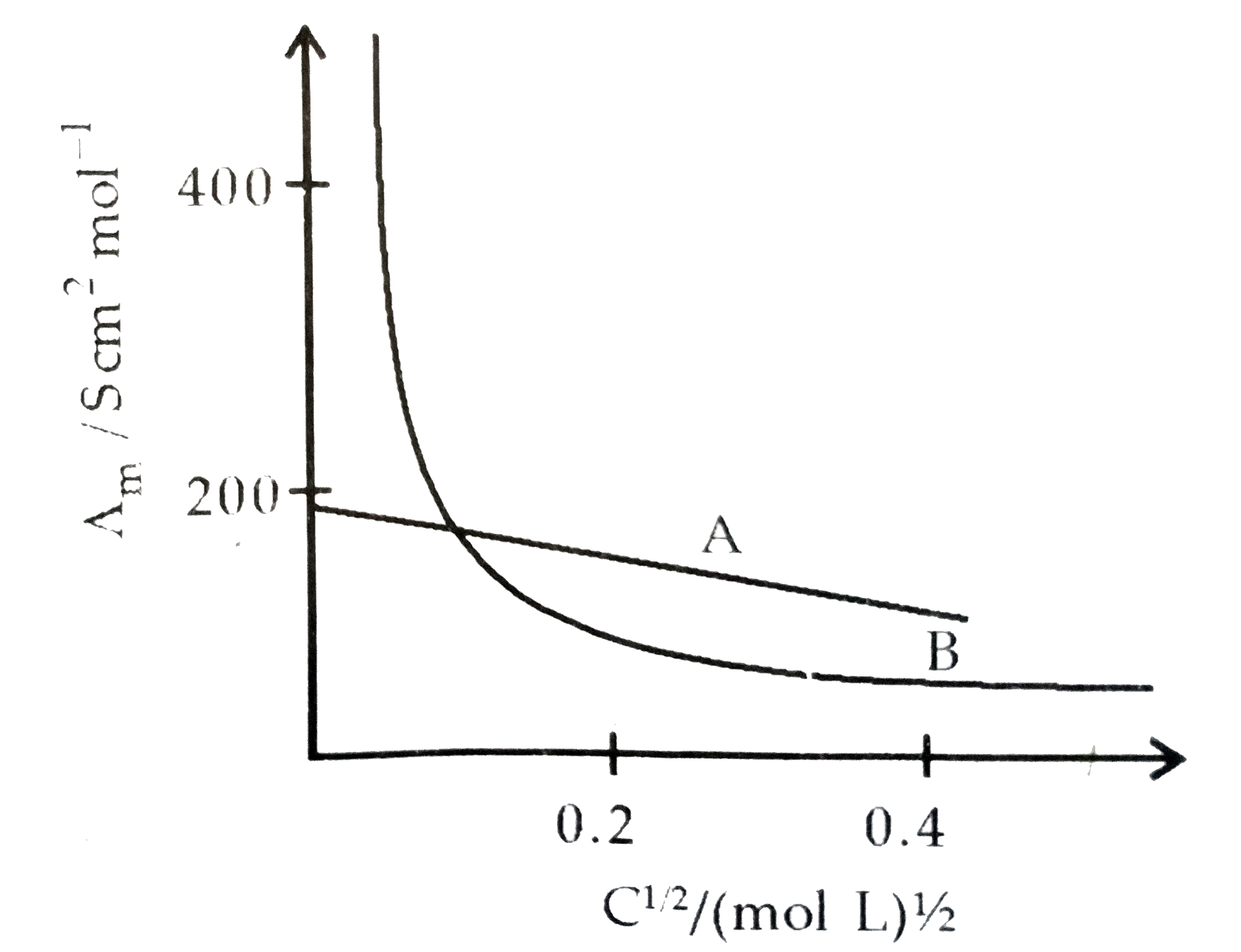Complete Solutions to IMPORTANT QUESTIONS FOR PRACTICE CHEMISTRY (THEORY-XII) UNSOLVED) of chapter XII BOARDS of Class 12 book with complete answers and questions
| Class 12 | CHEMISTRY |
| Chapter | XII BOARDS |
| XII BOARDS PREVIOUS YEAR | IMPORTANT QUESTIONS FOR PRACTICE CHEMISTRY (THEORY-XII) UNSOLVED) |
| Number Of Questions | 42 |
| Academic Year | 2023-24 |
Calculate the number of atoms in a face centred cubic unit cell.
View SolutionName the methods used for the vapour phase refining of impure titanium and nickel metals.
View SolutionWhy does `PCI_(3)` fume in moisture ?
View SolutionHow many methyl bromide be preferentially converted to methyl isocyanide ?
View SolutionDraw the structure of the compound named 4-methylpent-3-en-2-one
View SolutionName the deficiency diseases resulting from lack of Vitamins A and E in the diet.
View SolutionWhat are limited spectrum are antibiotics ? Give one example.
View SolutionAn aqueous solution of sodium chloride freezes below 273 K. Explain the lowering in freezing points of water with the help of a suitable diagram. 1
View SolutionThe conductivity of 0.001 M acetic is ` 4 xx 10^(-5)S//cm.` Calculate the dissociation constant of acetic acid, if molar conductivity at infinite dilution for acetic is 390 S `cm^(2)//mol.`
View SolutionExplain the following :
(a) Same substance can act both as colloids and crystalloids.
(b) Artificial rain is caused by spraying salt over clouds.
View SolutionHow are the following colloidal solutions prepared ?
(a) Sulphar in water
(b) Gold in water
View SolutionExplain the following :
(a) `NO_(2)` readily forms a dimer.
(b) `BiCI_(3)` is more stable than `BiCI_(5).`
View SolutionWhat is lanthanoid contraction? What are the consequences of lanthanold contraction?
View SolutionExplain the following reactions :
(a) Gabriel Phthalimide reaction
(b) Coupling reaction
View SolutionGive chemical tests to distinguish between the following pairs of compounds :
(a) Aniline and Ethylamine (b) Ethylamine and Dimethylamine
View SolutionExplain the following terms with suitable examples :
(a) Cationic detergents (b) Anionic detergents
View SolutionAn element occurs in bcc structure. It has a cell edge length of 250pm. Calculate the molar mass if its density is 8.0g `cm^(-3)`. Also calculate the radius of an atom of this element.
View SolutionThe partial pressure of ethane over a saturated solution containing `6.56 xx 10^(-2) g` of ethane is 1 bar. If the solution contains `5.00 xx 10^(-2) g` of ethane, then what shall be the partial pressure of the gas?
View Solution(a) What are fuel cells ? Explain the electrode reactions involved in the working of `H_(2)-O_(2)` fuel cell.
(b) Represent the galvanic cell in which the reaction
`Zn(s) + Cu^(2)(aq) to Zn^(2+) (aq) + Cu(s)` takes place.
View SolutionLokash is a social worker. A milkman in the village has been complaining that a factory in his nearby area dumps chemical waste in his field which has become a major cause of decreasing producutivity. Lokesh visited that place and found after analysis that the major waste was potassium permanganate which id being absorbed by the soil. He advised the factory people that they should potassium permanganate solution before dumping it into the drain.
Comment in brief :
(i) About the value/s displayed by Lokesh.
(b) Write balanced chemical equations for the two reactions showing oxidizing nature of potassium permanganate.
View Solution(a) How is a double salt different from a complex ?
(b) Write IUPAC name of the following :
(i) `K_(3)[Fe(C_(2)O_(4))_(3)] " " (ii) [Pt(NH_(3))_(6)]CI_(4)`
(c) Draw the structure of cis isomer of `[Co(NH_(3))_(4)CI_(2)]^(+)`.
View SolutionExplain the following :
(a) The dipole moment of chlorobenzene is lower than that of cyclohexyl chloride.
(b) Alkyl halides, though polar, are immiscible with water.
(c) Grignard reagents should be prepared under anhydrous condition.
View Solution(a) Give mechanism of preparation of ethoxy ethane from ethanol.
(b) How is toluene obtained from phenol?
View Solution(a) Write the structural and functional differences between DNA and RNA.
(b) Name two components of starch.
View Solution(a) Differentiate between copoly-merization and homopolymerization. Given one example of each.
(b) What is the role of Benzoyl peroxide in preparation of Polythene ?
View Solution(a) The decomposition of A into products has a value of K as `4.5 xx 10^(3)s^(-1) " at "10^(@)C` and energy of activation 60kJ `"mol"^(-1)`. At what temperature would K be `1.5 xx 10^(4) s^(-1)` ?
(b) (i) If half life period of a first order reaction is x and `3//4^(th)` life period of the same reaction is y, how are x and y related to each other ?
(ii) In some cases it is found that a large number of colliding molecules have energy more than threshold energy, yet the reaction is slow. Why?
View Solution(a) Write the balanced chemical equations for obtaining `XeO_(3) " and " XeOF_(4) "from "XeF_(6).`
(b) Account for the followingk :
(i) `H_(2)S` is less acidic then `H_(2)` Te.
(ii) `H_(3)PO_(2)` has reducing nature.
(iii) `SO_(2)` is an air pollutant.
View Solution(a) Two moles of organic compounds 'A' on treatment with a strong base gives two compounds 'B' and 'C'. Compound 'B' on dehydrogention with Cu gives 'A' while acidification of 'C' yields carboxylic and 'D' with molecular formula of `CH_(2)O_(2)`. Identify the compound A, B, C, and D and write all chemical reactions involved.
(b) (i) o-nitrophenol has lower b.p. than p-nitrophenol. Explain.
(ii) Write IUPAC name of the following :

View SolutionName the non-stoichiometric point defect responsible for the colour of alkali metals halides.
View SolutionWhat is shape `-` selective catalysis ?
View SolutionAmong the isomeric alkanes formula `C_(5)H_(12)`, identify the one that on photochemical chlorination yields only monochloro derivative.
View SolutionGive the IUPAC name and structure of the amine obtained when 3-chlorobutanamide undergoes Hoffmann- bromamide reaction.
View SolutionHow many ions are produced from the complex, `[Co(NH_(3))_(6)]CI_(2)` in solution ?
View SolutionWill the elevation in boiling point be same if 0.1 mol of Sodium chloride or 0.1 mol of sugar is dissolved in 1L of water ? Explain.
View SolutionThe following curve is obtained when molar conductivity `(wedge_(m))` is plotted against the square root of concentration, `c^(1//2)` for two electrolytes A and B
(a) How do you account for the increase in the molar conductivity of the electrolyte A on dilution.

(b) As seen from the graph, the value of limiting molar conductivity `(wedge_(m)^(0))` for electrolyte B cannot be obtained graphically. How can this value be obtained?1
View SolutionName the following:
(a) A transition metal which does not exhibit variation in oxidation state in its compounds.
(b) A compound where the transition metal is the +7 oxidation state.
(c) A member of the lanthanoid series which is well known to exhibit +4 oxidation state.
(d) Ore used in the preparation of Potassium dichromate.
View SolutionArrange the following in the order of property indicated for each set :
(i) `F_(2), Cl_(2) Br_(2),I_(2)`- increasing bond dissociation enthalpy.
HF,HCl, HBr, HI- increasing acid strength.
`NH_(3), PH_(3), AsH_(3), SbH_(3), BiH_(3)`- increasing base strength.
View Solution(a) Predict the major product of acid catalysed dehydration of 1-Methylcyclohexanol.
(b) You are given benzene, conc. `H_(2)SO_(4), NaOH` and did. HCI. Write the preparation of phenol using these reagents.
View SolutionAn element has a bcc structure with a celledge of `288` pm. The density of the element is `7.2 g cm^(-3)`. How many atins are present in `208 g` of the element?
View SolutionCalculate the boiling point of a 1M aqueous solution (density 1.04 g `Ml^(-1)`) of Potassium chloride `(K_(b) " for water " =0.52 K kg "mol"^(-1)," Atomic masse " : K=39u, CI=39.9u)` Assume, Potassium chloride is completely dissociated in solution.
View SolutionA galvanic cell consists of a metallic zinc plate immersed in 0.1 M `Zn (NO_(3))_(2)` solution and metallic plate of lead in 0.02M `Pb(NO_(3))_(2)` solution. Calculate the emf of the cell.
Write the chemical equation for the electrode reactions and represent the cell.
`("Given" : E^(@) Zn//Zn^(2+)=0.76V, " " E^(@)Pb^(2+)//Pb = -0.13V)`
View SolutionWhat chemcial princpicl is involved in choosing a reducing agent for getting the metal from its oxide ore? Consider the metal oxides `Al_(2)O_(3) and Fe_(2),O_(3)` and justify and choice of reducing agent in each case.
View Solution
IMPORTANT QUESTIONS FOR PRACTICE CHEMISTRY (THEORY-XII) UNSOLVED) questions and complete solutions for chapter XII BOARDS of XII BOARDS PREVIOUS YEAR of Class 12
All Exercises from XII BOARDS PREVIOUS YEAR Class 12 CHEMISTRY XII BOARDS
- C.B.S.E CLASS XII
- C.B.S.E CLASS XII
- C.B.S.E. CLASS - XII
- C.B.S.E. CLASS - XII
- C.B.S.E. CLASS-XII
- C.B.S.E. CLASS-XII
- CHEMISTRY (THEORY)
- CHEMISTRY (THEORY)
- CHEMISTRY (Theory) [SET - I]
- CHEMISTRY (Theory) [SET - I]
- Delhi Board : Set - II
- Delhi Board : Set - II
- Delhi Board : Set - III
- Delhi Board : Set - III
- DELHI BOARD SET II
- DELHI BOARD SET II
- General Instrucations
- General Instrucations
- IMPORTANT QUESTIONS FOR PRACTICE CHEMISTRY (THEORY-XII) UNSOLVED)
- IMPORTANT QUESTIONS FOR PRACTICE CHEMISTRY (THEORY-XII) UNSOLVED)
- OUTSIDE DELHI (SET-I)
- OUTSIDE DELHI (SET-I)
- Outside Delhi : SET-I
- Outside Delhi : SET-I
- Outside Delhi : SET-II
- Outside Delhi : SET-II
- Outside Delhi : SET-III
- Outside Delhi : SET-III
- Outside Delhi : SET-II
- Outside Delhi : SET-II
- Outside Delhi : SET-III
- Outside Delhi : SET-III
- Outside Delhi Board: Set-III
- Outside Delhi Board: Set-III
- Outside Delhi: Set-II
- Outside Delhi: Set-II
- QUESTION PAPER (SECTION-A)
- QUESTION PAPER (SECTION-A)
- QUESTION PAPER (SECTION-B)
- QUESTION PAPER (SECTION-B)
- QUESTION PAPER (SECTION-C)
- QUESTION PAPER (SECTION-C)
- Questions
- Questions
- SECTION-A
- SECTION-A
- SECTION-B
- SECTION-B
- SECTION-C
- SECTION-C
- SECTION-D
- SECTION-D
- Set - 1 Comptt.
- Set - 1 Comptt.
- SET - II
- SET - II
- Set -I
- Set -I
- Set -II
- Set -II
- Set -III
- Set -III
- Set I
- Set I
- Set II
- Set II
- Set III
- Set III
- SET- I
- SET- I
- SET- II
- SET- II
- SET- III
- SET- III
- SET-1
- SET-1
- SET-I
- SET-I
- SET-II
- SET-II
- SET-III
- SET-III
- [OUTSIDE DELHI : SET - III]
- [OUTSIDE DELHI : SET - III]
- [OUTSIDE DELHI : SET - II]
- [OUTSIDE DELHI : SET - II]
- [OUTSIDE DELHI : SET -III]
- [OUTSIDE DELHI : SET -III]
- [OUTSIDE DELHI : SET -II]
- [OUTSIDE DELHI : SET -II]
- [SET-1]
- [SET-1]
- [SET-III]
- [SET-III]
- [SET-II]
- [SET-II]
- [SET-I]
- [SET-I]